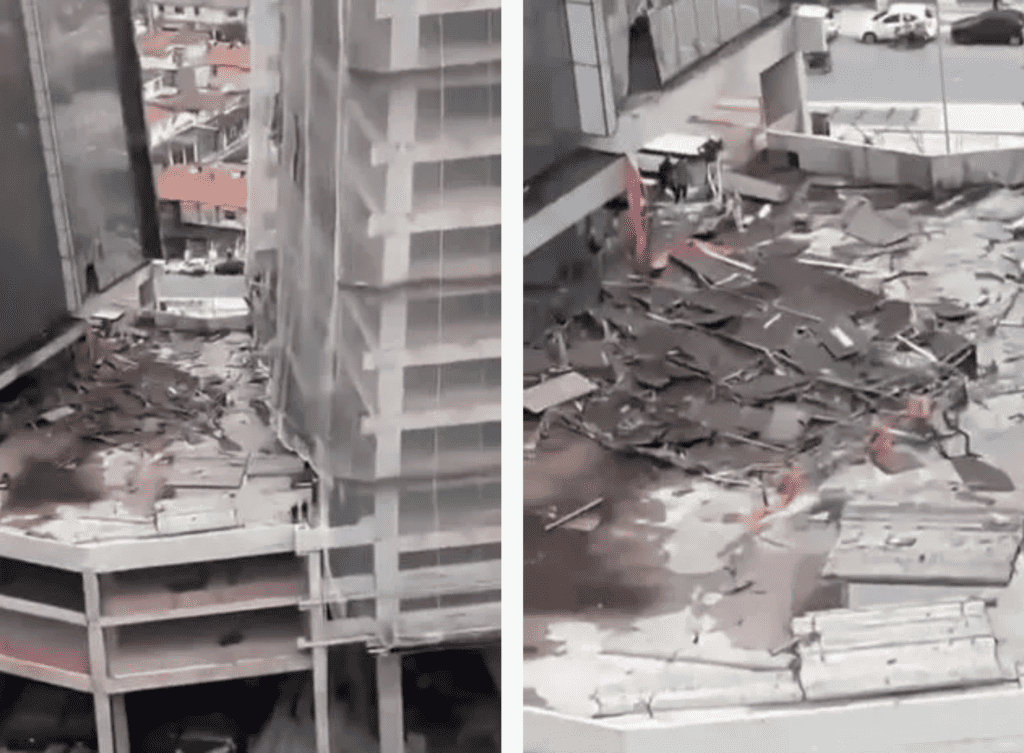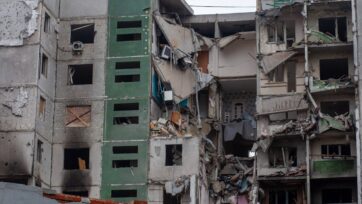In the heart of São Paulo, Brazil, a bustling metropolis adorned with towering skyscrapers, a disturbing event has caused a nationwide conversation on construction safety. A scaffold, an essential tool for the workers erecting two 33-story towers, catastrophically failed, leaving the workers precariously suspended in mid-air, tethered solely by thin safety ropes.
The unfolding drama amidst the rising towers portrayed a dangerous struggle for survival. Laborers desperately clung to safety ropes hanging from a metallic structure, above the shattered remains of their collapsed scaffold—a stark reminder of the delicate balance between life and death inherent in their profession. Tragically, a 19 year old worker succumbed to the incident, while others confronted the grim reality of dangling nearly 500 feet above the ground.
The scaffolding was situated on a structure that linked two 33-story buildings under construction in Chácara Santo Antônio, on the southern side of São Paulo. Alongside the fire and emergency response, a helicopter from the local military police was deployed and the majority of the workers were saved using a man basket suspended from one of the tower cranes.
EZTEC, the overseeing construction company, expressed profound regret for the tragic occurrence. Despite the implementation of safety measures, the loss of life serves as a reminder of the inherent dangers within the construction industry. The company pledged unwavering cooperation with the ongoing investigation and reaffirmed its commitment to implementing any recommendations from competent authorities.
Workers left hanging 500ft in air after scaffolding collapses (Video credit: Australian Community Media)
The towers, slated for completion by 2025, stand at an imposing height of 134 meters. The factors behind the scaffold’s collapse remain under meticulous investigation, forming an enigma to decipher amidst the somber reflections on the human cost associated with architectural aspirations.
The São Paulo tragedy highlights the urgent need for improved safety standards in Brazil and possibly other countries. It emphasizes the crucial importance of thorough training, regular inspections, proper equipment maintenance, and fostering a safety-focused culture in the construction industry. A strong commitment is essential to prevent the human cost of urbanization from turning into a loss of lives.
Systems Engineering Perspective
From a systems engineering viewpoint, the São Paulo incident reveals a breakdown in the intricate interplay of construction system components, exposing potential vulnerabilities in design, implementation, and safety-related maintenance.
In construction projects viewed through a systems engineering lens, the scaffolding failure indicates a need for comprehensive systems analysis to identify root causes and contributing factors. This entails evaluating interactions, including requirements specifications, design specifications, materials, construction quality, training, safety adherence, and emergency response procedures.
A robust safety culture is crucial, extending to the overall mindset, training, and communication in the construction industry worldwide. This tragedy prompts a reevaluation of safety protocols and their integration into the broader construction system wherever safety is not already assured.
Moving forward, a systems engineering perspective encourages a holistic examination of the entire construction process, rectifying immediate issues and implementing systemic improvements to prevent similar incidents. Identifying weaknesses and enhancing resilience can better safeguard workers and the public in future construction endeavours.

Scaffolding collapsed in São Paulo (Image credit: Jam Press Vid)
References
Khatton, Nimrah 2023, Scaffold Collapse in São Paulo: Workers Left Dangling 500ft in the Air, BNN Breaking, viewed 30th November 2023, https://bnn.network/breaking-news/accidents/scaffold-collapse-in-sao-paulo-workers-left-dangling-500ft-in-the-air/

























